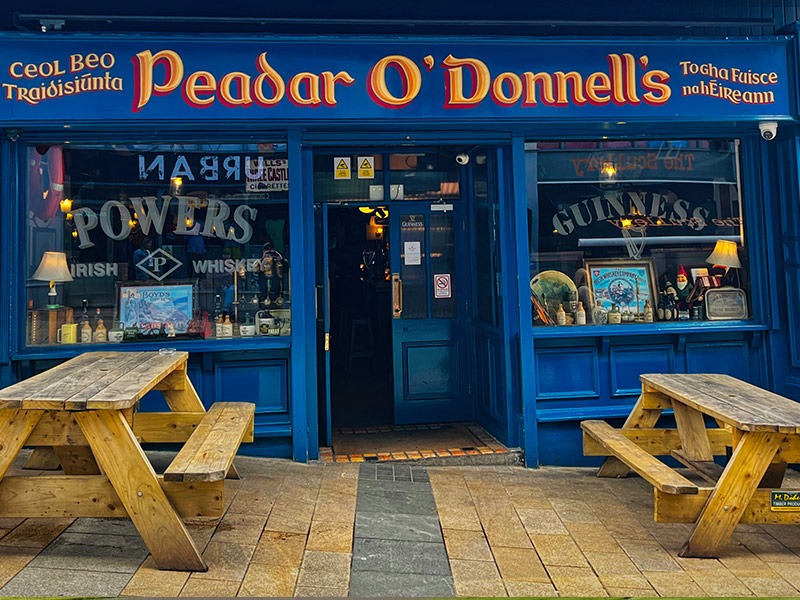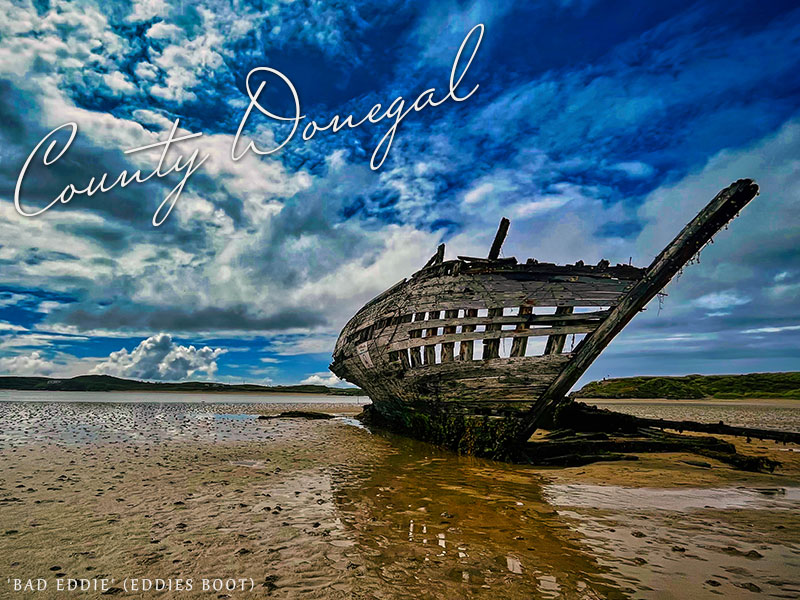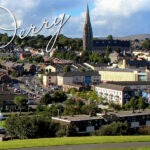Belfast, Capital of Northern Ireland
IN THE HEART OF NORTHERN IRELAND, RICH IN HISTORY AND CULTURE.
Belfast, the capital of Northern Ireland, has gone through a turbulent history. From the years of the Northern Ireland conflict to today's cultural hub, the city has changed a lot.
The Troubles: a period of conflict
The Northern Ireland conflict, also known as the "Troubles", was a violent political conflict between Catholic nationalists, who sought unification with Ireland, and Protestant unionists, who fought to remain part of the United Kingdom. The tensions led to decades of violent clashes, bombings, and many deaths.
In the 1990s, however, a peace process began, which culminated in 1998 with the Good Friday Agreement. The agreement set the political framework for a peaceful resolution of the conflict and paved the way for the de-escalation of violence. However, in particularly conflict-prone areas of Belfast, high walls still separate the Catholic population from the Protestant unionists to prevent direct confrontations and protect the lives of residents.
Die Peace Walls
These "Peace Walls", which were once erected as a temporary solution during times of conflict, still serve as protective barriers to minimize violence between the rival communities.
The existence of the walls has a profound social impact, affecting daily life, routes, social interactions and even the identity of residents and how they live together in Belfast.

„Peace Walls“

„Gates which can be closed at any time“
The discussion about taking down the peace walls is complex. While some see the walls as outdated relics of the past that should be removed, others fear for their safety and the resurgence of old conflicts
The vision of a future without peace walls is a powerful symbol for the peace process in Northern Ireland. It's about building bridges, both metaphorically and physically, and creating a society where the past is acknowledged and used as a foundation for a shared, peaceful future.
Belfast, cultural metropolis and the Titanic legacy
Since then, Belfast has developed into a thriving cultural metropolis. The city has a vibrant music scene with regular concerts and festivals. The Cathedral Quarter is a popular spot for nightlife and has many bars, restaurants, and art galleries.
Belfast also has a rich historical past. Belfast played a crucial role in the history of the Titanic. The Titanic Belfast Museum tells the story of the famous ship. The construction of the Titanic, which was built at the Harland and Wolff shipyard, was a milestone in the industrial history of the city and symbolically represents Belfast's status as a leading shipbuilding city in the early 20th century. The construction of the Titanic in Belfast thus remains an important chapter in the city's history and symbolizes both human ambition and tragic fate.
Tip: A variety of exhibitions on the history and culture of Northern Ireland and Belfast can also be found at the Ulster Museum.

“The Titanic Museum”
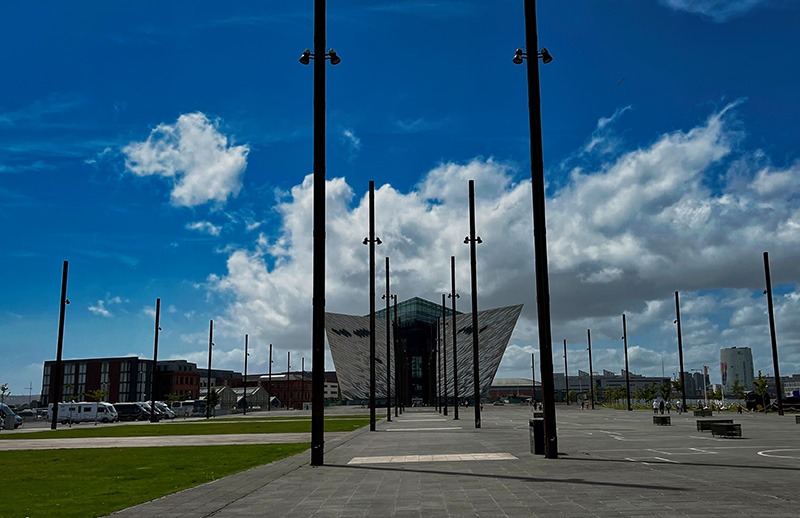
“The Titanic Slipways”
Belfast Cultural Renaissance
The city is characterized by impressive architecture, including the Belfast City Hall and Belfast Castle. The murals in certain neighborhoods tell the story of the Northern Ireland conflict, the "Troubles," and serve as a reminder of the past.
Belfast MAP – SEHENSWERTES
Belfast is also known for its diverse landscapes. The city lies on the banks of the Lagan and has many parks and gardens that invite you to take walks and relax. The botanical garden is a popular meeting place for locals and tourists.
The conflict-ridden city has transformed into a thriving cultural hub. The residents have worked hard to maintain peace and make their Belfast a livable city.
Arrival and accommodation in Belfast
Travel to Belfast
Belfast has two main airports: Belfast International Airport (BFS) and George Best Belfast City Airport (BHD). Direct Flights: Direct flights from Germany to Belfast are limited and depend heavily on the departure airport. It's possible that there might not be a direct connection, depending on which airport in Germany you're flying from. Connecting Flights: More common are flights with at least one stopover, for example, in London, Amsterdam, or other major European airports. Airlines like British Airways, KLM, Lufthansa, and EasyJet offer various connecting options.
Or you can travel via Dublin Airport and then take the train, bus, or rent a car to continue your journey to Belfast.
To travel by train from Dublin to Belfast, it is best to start at Dublin Connolly Station. From there, you can take one of the regular trains operated by Irish Rail (in the Republic of Ireland) and NI Railways (in Northern Ireland) that go directly to Belfast Central, the main station in Belfast. The journey usually takes about 2 to 2.5 hours. It is recommended to reserve seats in advance, especially during peak times and holidays, to ensure you get a spot. However, you can also purchase tickets at the ticket counter or at machines at Dublin Connolly Station.
The buses from Dublin to Belfast depart from Busáras (Central Bus Station) or from Dublin Airport.
Direct Journey: Companies like Translink and Bus Éireann offer direct trips without stops.
Arrival in Belfast: The buses usually arrive at the Europa Buscentre or at the Great Victoria Street Bus Station in Belfast.
Travel Duration: The journey usually takes between 2 and 2.5 hours.
Starting at Dublin Airport: Once you exit the airport, follow the signs for the M1 Northbound. This is the motorway that leads directly to Belfast.
Getting onto the M1: Follow the signs for the M1 towards Belfast. The M1 is essentially the main route for traveling to Belfast, so it’s quite easy to find and follow.
Crossing the Border into Northern Ireland: While driving north on the M1, you will cross the border between the Republic of Ireland and Northern Ireland. Be sure to pay attention to the road signs as they switch from kilometers to miles! 😉
Switching to the A12: As you approach Belfast, you will see signs for the A12, which is part of the motorway network leading into the city center. The M1 seamlessly transitions into the A12, so making this switch is very straightforward.
Towards Belfast City Centre: The A12 leads directly into the heart of Belfast. The signage will guide you through the entire process, so no worries—Belfast is quite navigable.
Total Travel Time: The journey usually takes about 1.5 to 2 hours, depending on traffic conditions.
Accommodation in Belfast
Some recommended accommodation in Belfast, from traditional hotels to modern apartments:
Hampton by Hilton Belfast City Centre: The Hampton by Hilton in Belfast City Centre offers modern rooms, complimentary breakfast, and Wi-Fi. It is conveniently located near major attractions and business districts, making it a great choice for both business and leisure travelers. Excellent location.
Crowne Plaza Belfast, an IHG Hotel: The Crowne Plaza Belfast is located in a quiet park area just outside the city center. It offers luxurious rooms, a fitness center, a swimming pool, and excellent conference facilities. Ideal for business travelers and visitors seeking relaxation.
Europa Hotel: The Europa Hotel is an iconic hotel in Belfast, known for its history and luxurious charm. It is located in the heart of the city, close to many major attractions. The hotel offers elegant rooms, excellent dining options, and is renowned for its exceptional customer service.
Ibis Belfast City Centre: The Ibis Belfast City Centre offers modern, comfortable rooms at an affordable price. It is conveniently located for exploring the city on foot, with numerous shopping options, restaurants, and bars nearby.
Central Avenue Apartment Belfast: The Central Avenue Apartment offers modern self-catering accommodations in the heart of Belfast. These apartments are ideal for travelers seeking flexibility and a "home away from home," with the option to cook their own meals.
Luxury Belfast Stay im Queens Quarter
This accommodation offers luxurious apartments in the trendy Queens Quarter. It is ideal for visitors who want to experience local life, with access to cafes, museums, and Queen’s University. The apartments are spacious and modernly furnished.
Tara Lodge offers cozy rooms and a hearty breakfast. It is conveniently located near Queen’s University and the Botanic Gardens, making it an excellent starting point for exploring the city.
Avenue Guest House: This charming guesthouse offers a warm and welcoming atmosphere. It is located near Lisburn Road, known for its shops and restaurants.
Maryville House: An elegant bed & breakfast that also operates a tearoom. It is located slightly outside the city center, offering a quiet retreat with excellent service.
Vagabonds is known for its friendly atmosphere and clean facilities. It is located near the university district and offers an excellent location for exploring the city.
Belfast International Youth Hostel: This hostel is located near Queen’s University and the Ulster Museum. It offers both dormitories and private rooms, making it a good option for travelers with different budgets.
Global Village: A cozy and colorful hostel in the heart of the university district. It offers a relaxed atmosphere and is a great place to meet other travelers.
Recommended daily budget for Belfast
Accommodation: Prices for hostels and budget hotels can range between €20 and €50 per night per person.
Food and Drink: There are plenty of restaurants and cafes in Belfast that offer affordable meals. A typical lunch costs between €8 and €12, while dinner in a budget restaurant is around €15-30. Pubs in Belfast are often a cheap option for dinner and drinks. A pint of beer costs about £5 (€6).
Attractions: Belfast also offers many free attractions that are worth a visit:
The Ulster Museum: Discover the history of Northern Ireland through numerous exhibitions. Admission is free.
Botanic Gardens: An ideal place for a relaxing walk. The botanical gardens are free to access and offer a variety of plants and a beautiful Palm House.
Belfast City Hall: Free guided tours provide insights into the history and architecture of the City Hall.
St. George’s Market: Visit this market on the weekend to enjoy the local atmosphere. Admission is free, and there are often free music performances.
Overall, you should be able to get by on a daily budget of €50-60 in Belfast.
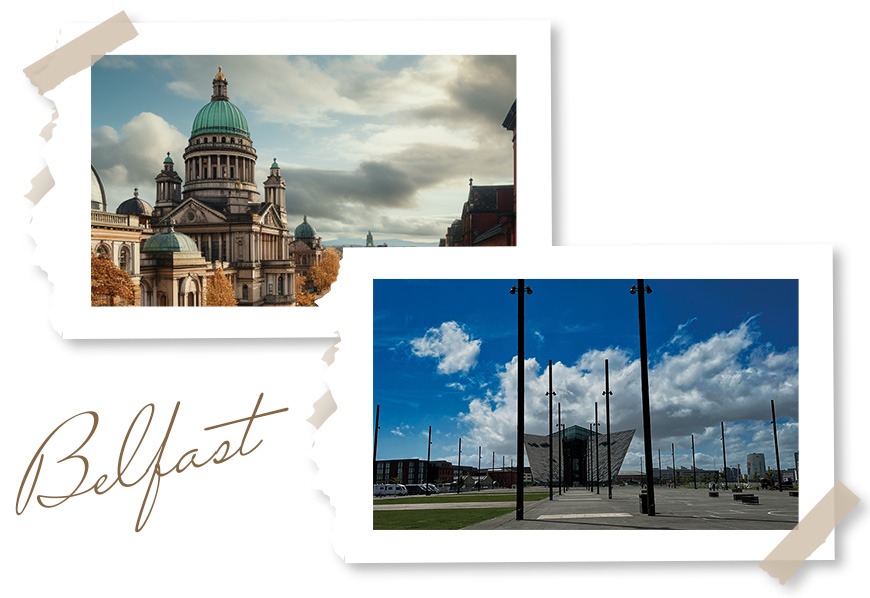
Tips and highlights in Belfast
What can I expect from Belfast?
Explore the historic landmarks and hidden treasures of Belfast.
Belfast, the lively capital of Northern Ireland, is now a vibrant, peaceful, and welcoming destination, rich in history and tradition. From the iconic Titanic Quarter to the bustling pubs of the Cathedral Quarter, Belfast invites you to immerse yourself in its charm. A visit to the Belfast City Hall and the murals offers a glimpse into the city's past struggles and triumphs.
The Titanic Belfast Museum, located in the heart of the Titanic Quarter, is an architectural marvel and a tribute to Belfast's shipbuilding heritage. It's not just a museum; it's an immersive journey through the history of the Titanic, from its construction in Belfast to its tragic maiden voyage.
Belfast lies between hills and the sea, offering breathtaking natural landscapes. Cave Hill provides panoramic views of the city, while the Botanic Gardens are a peaceful escape from the urban hustle and bustle.
Belfast is also a great starting point to explore Northern Ireland. Take a day trip and explore the Giant’s Causeway, a UNESCO World Heritage Site since 1986. This unique geological formation of 40,000 evenly shaped basalt columns, about 60 million years old, is shrouded in legends and offers impressive views of the Northern Irish coastline. The Carrick-a-Rede Rope Bridge and the Mourne Mountains are also easily reachable on a day trip. Trips that are definitely worth it!
For me, Belfast is always very exciting and an unforgettable experience. Belfast is just a remarkable city with its rich history, vibrant culture, and historical heritage. It has a distinctive energy that pulses through the streets and welcomes visitors with open arms, captivating them with its turbulent past and modern cosmopolitan society.








